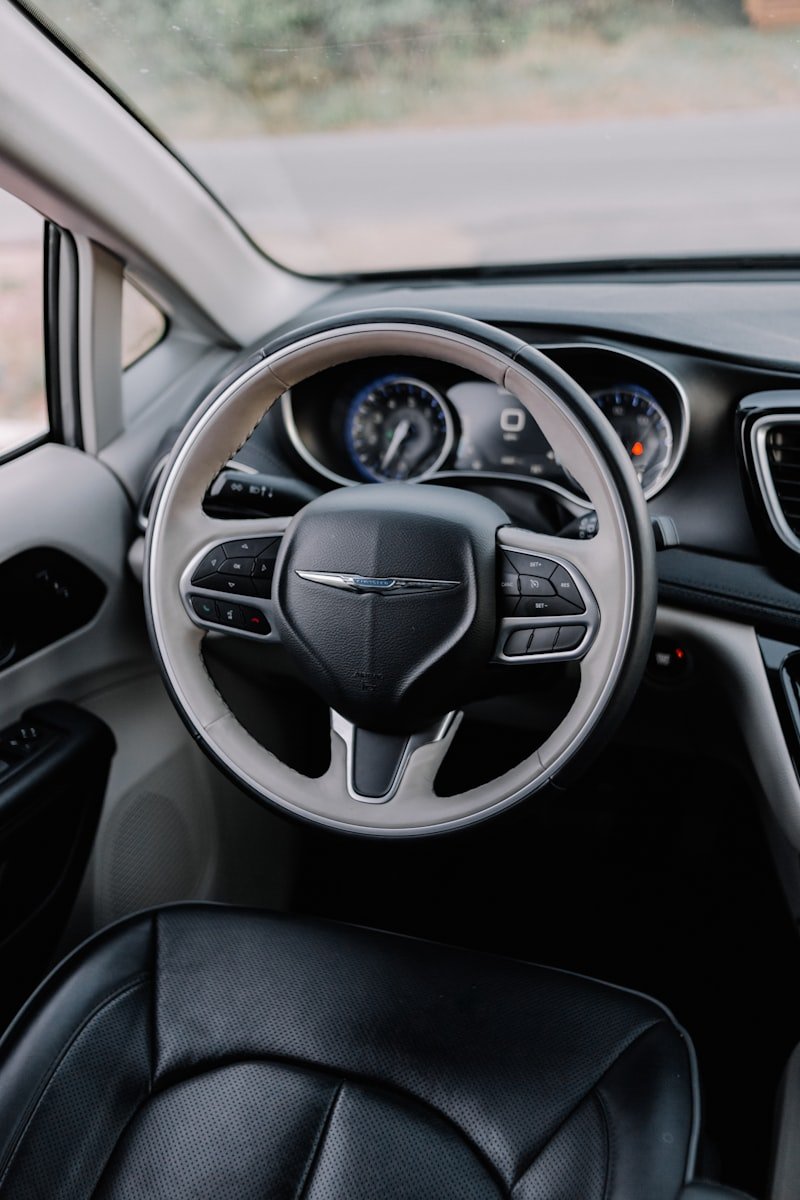Introduction:
Have you ever experienced the frustration of seeing that mysterious “Check Engine” light illuminate on your dashboard? One particular code that might appear is the B1676 code. While it may sound like a cryptic message from another world, fear not! In this article, we will unravel the secrets behind the B1676 code and help you understand what it means for your vehicle.
Understanding the B1676 Code:
The B1676 code belongs to the realm of automotive diagnostics and is specifically related to the body control module (BCM). This code indicates a problem with the BCM’s ignition switch circuit. The body control module acts as the central nervous system of your vehicle, coordinating various functions such as lighting, door locks, and more. When the B1676 code appears, it signifies an issue within this crucial system.

Possible Causes of the B1676 Code:
Several factors can trigger the dreaded B1676 code. One common cause is a faulty ignition switch, which may have worn-out contacts or internal wiring issues. Another culprit could be a malfunctioning or damaged body control module itself. Additionally, loose or corroded electrical connections related to the ignition switch circuit may contribute to the appearance of this code.
Symptoms and Effects:
When the B1676 code is present, you may experience certain symptoms in your vehicle. These can include intermittent power loss to various systems controlled by the body control module, such as interior lights, power windows, or even the engine ignition itself. Furthermore, the infamous “Check Engine” light will persist until the underlying issue is resolved.
Diagnosing and Resolving the B1676 Code:
To diagnose the exact cause of the B1676 code, it is advisable to consult a professional mechanic or utilize specialized diagnostic equipment. They will perform a comprehensive assessment of the ignition switch circuit, body control module, and associated components to pinpoint the source of the problem. Once identified, the faulty component can be repaired or replaced accordingly, ensuring your vehicle operates smoothly once again.

Conclusion:
The B1676 code may initially seem perplexing, but armed with the knowledge provided in this article, you are now better equipped to tackle this automotive challenge head-on. Remember, it is crucial to address the underlying issue promptly to prevent further complications and ensure the optimal performance of your vehicle. So, the next time that “Check Engine” light appears, approach it with confidence, knowing that you have decoded the secrets of the B1676 code.
Decoding the Mystery: Unraveling the Secrets Behind the B1676 Code
Are you tired of the mysterious B1676 code popping up on your car’s dashboard? Don’t worry, we’ve got you covered! In this article, we’ll dive deep into the intricacies of this enigmatic code and uncover its secrets. So buckle up and let’s decode the mystery behind the B1676 code!
The B1676 code is an indication that something is amiss with your vehicle’s passive anti-theft system (PATS). This system plays a crucial role in preventing unauthorized access to your car. When the B1676 code appears, it means there is a fault or malfunction within the PATS, and it needs your attention.
One possible cause of this code could be a faulty transceiver. The transceiver acts as a communication bridge between your car’s key and the PATS. If it malfunctions, the code may be triggered. Another culprit could be a problem with the ignition switch. A worn-out or damaged ignition switch can interfere with the PATS, leading to the appearance of the B1676 code.
To unravel the secrets behind this code, it’s best to consult a professional mechanic or technician who has experience with your vehicle’s make and model. They will have the necessary tools and expertise to diagnose the exact issue causing the code to appear. Remember, each car is unique, and what might be causing the B1676 code in one vehicle may not be the same for another.
In the hands of a skilled technician, a diagnostic scan tool will be used to retrieve the specific trouble codes stored in your car’s computer. These codes provide valuable clues about the underlying problem. Once the root cause is identified, the technician can take appropriate measures to resolve the issue and clear the B1676 code from your car’s system.
The B1676 code may seem like a daunting mystery, but with the help of an experienced professional, it can be deciphered and resolved. Remember to address the issue promptly to ensure the optimal performance and security of your vehicle. Stay curious and let the experts guide you on the path to unveiling the secrets behind the B1676 code!
B1676 Code: The Automotive Enigma That’s Driving Mechanics Crazy
Are you ready to uncover the mysterious B1676 code that has mechanics scratching their heads in bewilderment? Buckle up as we delve into the world of automotive enigmas and explore this perplexing diagnostic trouble code.
Picture this: you’re cruising down the road, enjoying the wind in your hair and the hum of the engine. Suddenly, a dreaded check engine light illuminates on your dashboard, disrupting your serene drive. Panic sets in as you wonder what could possibly be wrong with your beloved vehicle.
Enter the B1676 code—a cryptic combination of numbers and letters that sends shivers down the spines of even the most seasoned mechanics. This code is no ordinary puzzle; it’s an enigma wrapped in automotive complexity.
So, what does B1676 actually mean? Well, my friend, let me break it down for you. In the realm of automotive diagnostics, each trouble code corresponds to a specific issue within the vehicle. The B1676 code specifically relates to a fault detected in the restraint control module. It points towards a problem in the collision avoidance system, leaving car enthusiasts and professionals alike scratching their heads.
Imagine trying to solve a riddle without any clues—it’s like navigating through a maze blindfolded. Mechanics are faced with the daunting task of unraveling the secrets hidden behind the B1676 code. They must employ their expertise, knowledge, and a touch of intuition to diagnose and fix the underlying issue.
This automotive enigma demands perseverance and a keen eye for detail. Like intrepid detectives, mechanics meticulously inspect wiring connections, check sensors, and analyze data to uncover the root cause of the problem. With every twist and turn, they inch closer to solving this confounding mystery.
The B1676 code serves as a reminder that the automotive world is full of puzzles waiting to be solved. It showcases the ingenuity and determination of mechanics who strive to conquer these challenges. So, the next time you encounter the B1676 code, take a deep breath and trust in the expertise of those who dedicate their lives to deciphering automotive enigmas.
The B1676 code is an automotive puzzle that has mechanics on the edge of their seats. It represents the complex nature of modern vehicles and the challenges faced by those who seek to understand and fix them. As the wheels of progress keep turning, rest assured that automotive enthusiasts and experts will continue their quest to unravel the enigma behind the B1676 code.
From Error to Solution: Experts Share Insights on Tackling the B1676 Code
Are you tired of seeing that pesky B1676 code pop up on your car’s dashboard? Well, fear not! In this article, we’ll dive into the insights shared by experts on how to tackle this error head-on and find the perfect solution. So, let’s get started!
What exactly is the B1676 code? It’s an error code that commonly appears in vehicles when there is a problem with the battery pack temperature sensor. This sensor plays a crucial role in monitoring the temperature of the battery, ensuring its optimal performance and safety. When the sensor detects an abnormal temperature reading, it triggers the B1676 code.
Now, let’s explore the insights shared by experts regarding this issue. One common cause of the B1676 code is a faulty battery temperature sensor. This sensor can malfunction due to various reasons, such as damage from exposure to extreme temperatures or electrical issues. Experts recommend starting the troubleshooting process by inspecting the sensor for any physical damage or loose connections. If any issues are detected, replacing the sensor might be necessary.
Another potential culprit behind the B1676 code is a weak or discharged battery. A low battery voltage can lead to inaccurate temperature readings, triggering the error code. Experts advise checking the battery’s voltage using a multimeter and ensuring it meets the manufacturer’s specifications. If the voltage is below the recommended level, charging or replacing the battery might be required.
Furthermore, experts emphasize the importance of keeping the battery pack clean and free from debris. Accumulated dirt or corrosion on the battery terminals can disrupt the sensor’s functionality, leading to erroneous temperature readings. Regularly inspecting and cleaning the battery terminals can help prevent the B1676 code from appearing.
Tackling the B1676 code requires a systematic approach. By examining the battery temperature sensor, checking the battery voltage, and maintaining cleanliness, you can address the underlying issues causing this error. Remember, if you’re unsure or uncomfortable performing these tasks yourself, it’s always best to consult a qualified mechanic for assistance. So, don’t let the B1676 code keep you from enjoying a smooth and trouble-free ride!
Breakthrough Discovery: Revolutionary Fix for the Stubborn B1676 Code
Introduction:
Hey there, fellow car enthusiasts! Are you tired of dealing with the persistent B1676 code that haunts your vehicle’s diagnostic system? Well, get ready to be amazed because we have some fantastic news for you. Thanks to a recent groundbreaking discovery, a revolutionary fix has been found to tackle the stubborn B1676 code once and for all.
The Stubborn B1676 Code Unveiled:
So, what exactly is this elusive B1676 code that keeps troubling you? It’s an automotive diagnostic trouble code that occurs when there’s a malfunction in the restraint control module. This module is responsible for monitoring various safety features in your vehicle, such as airbags and seatbelt pretensioners. When the B1676 code pops up, it indicates an issue with the module’s circuit or power supply.
Revolutionary Fix Unleashed:
After years of research and development, automotive experts have finally discovered a revolutionary fix for the stubborn B1676 code. Picture this: a team of dedicated engineers and technicians working tirelessly to unravel the mystery behind this infuriating code. They left no stone unturned and eventually cracked the code, finding a solution that will leave you astounded.
Introducing the Ultimate Solution:
So, what’s the secret behind this groundbreaking fix? The genius lies in a newly developed software update specifically designed to address the B1676 code. This innovative update reconfigures the circuitry within the restraint control module, ensuring a seamless connection and eliminating any glitches that trigger the error code.
Benefits Galore:
Now, let’s talk about the benefits of this revolutionary fix. Firstly, your worries about the persistent B1676 code will become a thing of the past. Say goodbye to those annoying warning lights and the constant fear of compromised safety features. With this breakthrough solution, you can drive with confidence, knowing that your vehicle’s restraint control module is functioning flawlessly.
Conclusion:
The revolutionary fix for the stubborn B1676 code is a game-changer in the automotive industry. It offers a long-awaited solution to an issue that has plagued countless car owners. So, if you’ve been struggling with the B1676 code, rejoice! The ultimate fix is here, ensuring your vehicle’s safety systems work seamlessly and providing you with peace of mind on the road. Get ready to embrace this breakthrough discovery and bid farewell to the frustrating B1676 code once and for all!
